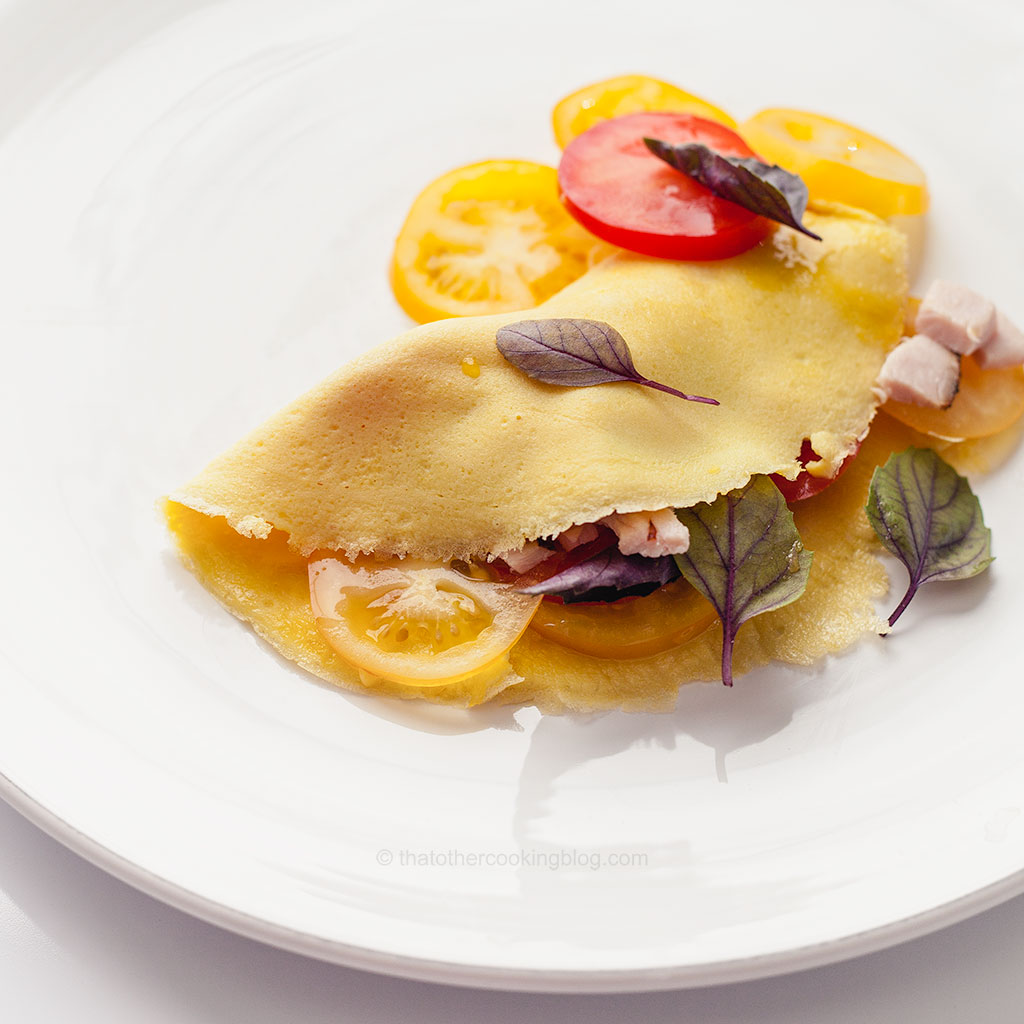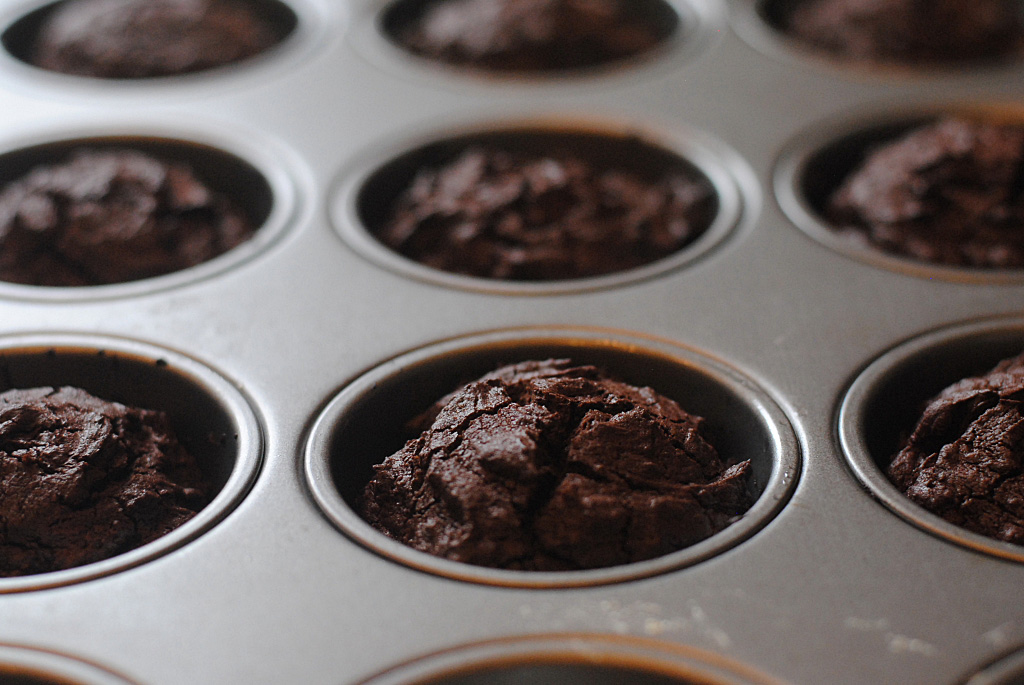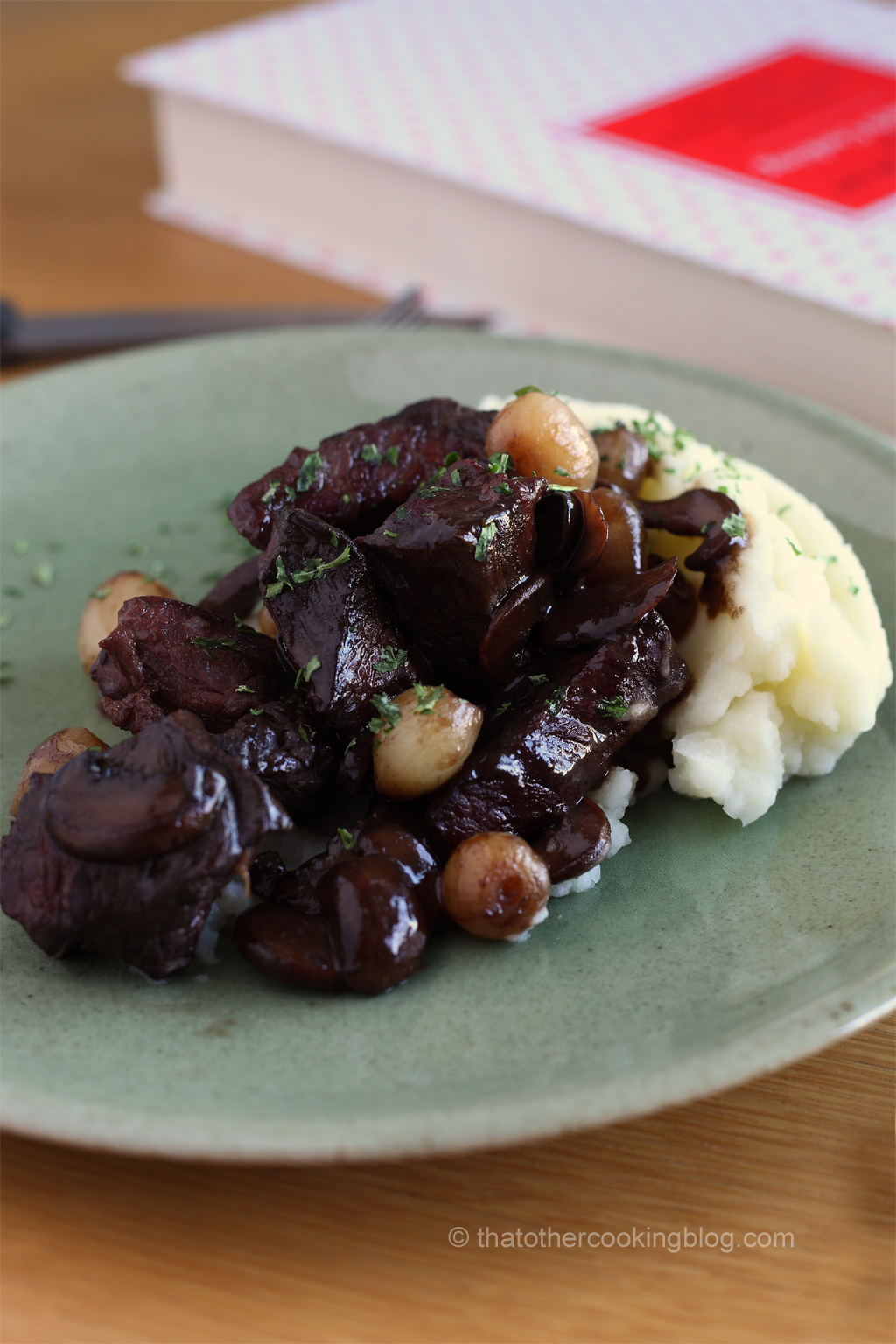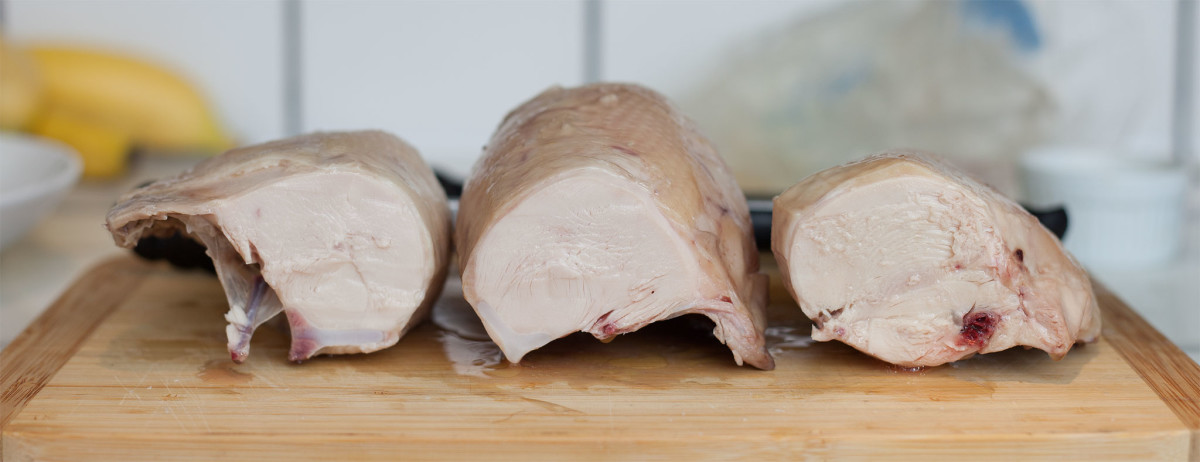Quite possibly the simplest recipe I’ve ever posted here. But if you have been cooking for some time, you know simplicity is usually a good thing. The ham I used on this recipe comes from an older post. I’m calling it ham, although ham usually involves a pink salt cure containing nitrites… so it’s a bit more technical and requires a long curing period. The nitrites do have an effect on flavour, colour and texture (in a positive way that is). My ham was simply brined in kosher salt and other spices and cooked sous vide. I recently posted the recipe here. It’s been a while since I’ve cured anything using nitrite salts but I love the results when I do. Anyways, any ham from the store will obviously work just as well.
The tomatoes I got at the store. Haven’t been able to grow my own tomatoes yet and it will have to wait until next summer. I just missed the window and I think it will get too overcast and rainy by the time the tomatoes need good sunlight to develop well. I did use a few leafs from my homegrown purple basil plant which btw is flowering now and those flowers are so pretty. I need to feature those in a recipe soon before they go. I’ve been growing my own herbs this summer.
If you have been reading the blog, you’ll know by know the relevance of eggs within its pages. It happens to be my favourite ingredient. It’s really a miracle of nature, and every chance I get, I try to employ them and learn more about them. I keep my eggs at room temperature ready for action. I go through them quickly enough that I don’t need to worry about refrigeration.
Cooking eggs is an art and a science…. but more of a science in my opinion. They are complex enough that many articles about how to properly cook them have been written. They’re are featured in food science books and french technique books and research papers, etc. There’s an incredible amount of stuff that can be learned from cooking an egg well. And aside from reading, repetition and practice is the only way I know how to get better at something.
I use a nonstick pan to cook eggs. But there are other options and if you’re adventourous enough, eggs can even cooked on a stainless still pan if you season it before hand.
French technique dictates that a proper omelette requires butter to coat the pan. I usually do it this way but not this time around. I used olive oil although not in the pan. I mixed about a tablespoon of it with my egg. And since egg yolks are amazing at emulsions, the oil is easily incorporated when you whisk the egg. Amazing really. I also don’t mix any air when beating the eggs, because I don’t even beat them anymore. I just crack them ope, empty the eggs in a bowl and swirl the bowl around until the yolks break and mix with the whites. Room temperature eggs are perfect for this. Now the eggs have extra fat in them and will be more tender. They will also have a harder time sticking to the pan.
Salt. Yep, salt does things to eggs. It affects color and texture. If you salt your egg mix, the yellow colour will turn a deeper hue and the texture will be more tender but less fluffy. I like this anyways. A long time ago I experimented with salt and eggs, you can read that post here.
Heat. If there was anything important about cooking eggs is how to apply heat to them. In any situation heat could be applied differently but how much heat to apply is usually a well known thing these days. And there are plenty of charts that go over temperatures and the effect on the yolks and the whites. But when making an omelette the traditional way this is overkill. By all means whip out that infrared thermometer and go crazy if that’s what you like. Or, simply be patient, apply little heat and trust your senses, specially your eyes. I heat up the pan on medium heat for a few minutes then remove the pan from the stove and add the egg mix into it. Coat the pan evenly with it and wait. If I notice the eggs aren’t going to set with the leftover heat in the pan, i return the pan to the stove for a little longer and then remove it again. Possibly adding the lid to make sure the top surface also cooks. Once you’ve done this enough times, it becomes second nature. You won’t even think about it.
No browned eggs. I’m kind of torn about this one but I get it. Once an omelette goes a bit brown… the bitterness of it could be bothersome to some egg purists. Some people love that. I don’t love it. I like eggs cooked just enough to be set but I wouldn’t turn down an omelette with some browning. Happens all the time and it is perfectly fine.
I don’t know how this happened. I didn’t mean to geek out about egg cooking tonight but too late for that I guess. It’s hard not too, at least for me. I find them fascinating and next to roasting a chicken and a few other things, cooking eggs is an amazing skill to try to master and practice constantly. Don’t think the recipe is needed but if you were wondering, I used one egg, 1 Tbsp of extra virgin olive oil, some tomatoes, some basil and some cubed ham. Ah, and some kosher salt. If you think this is too healthy, add a ton of cheese. Good night!
Wanna get more sous-vide cooking guides and cool cooking how-to’s in your mailbox? You know what needs to be done!
We never spam. You should only be getting updates when new content is posted on the site. We also respect your privacy. We don’t share your email address with anyone and you can unsubscribe anytime!








No comments
beautiful! just beautiful.
thank you Mimi!!!
This doesn’t look so simple :), But it does look sooooo good!!!
🙂 it’s super simple! thanks Lotis!
Excellent. I read McGee on cooking eggs some time ago. There’s a lot in the subject. You have done a great job here Paul.
Thank you Conor! Yeah, McGee on anything food, excellent source. Modernist Cuisine books also great. The Food Lab by Kenji-Lopez has a great article about eggs too.
never thought omelette could look so gorgeous 🙂
thank you Heenie! :)!!!